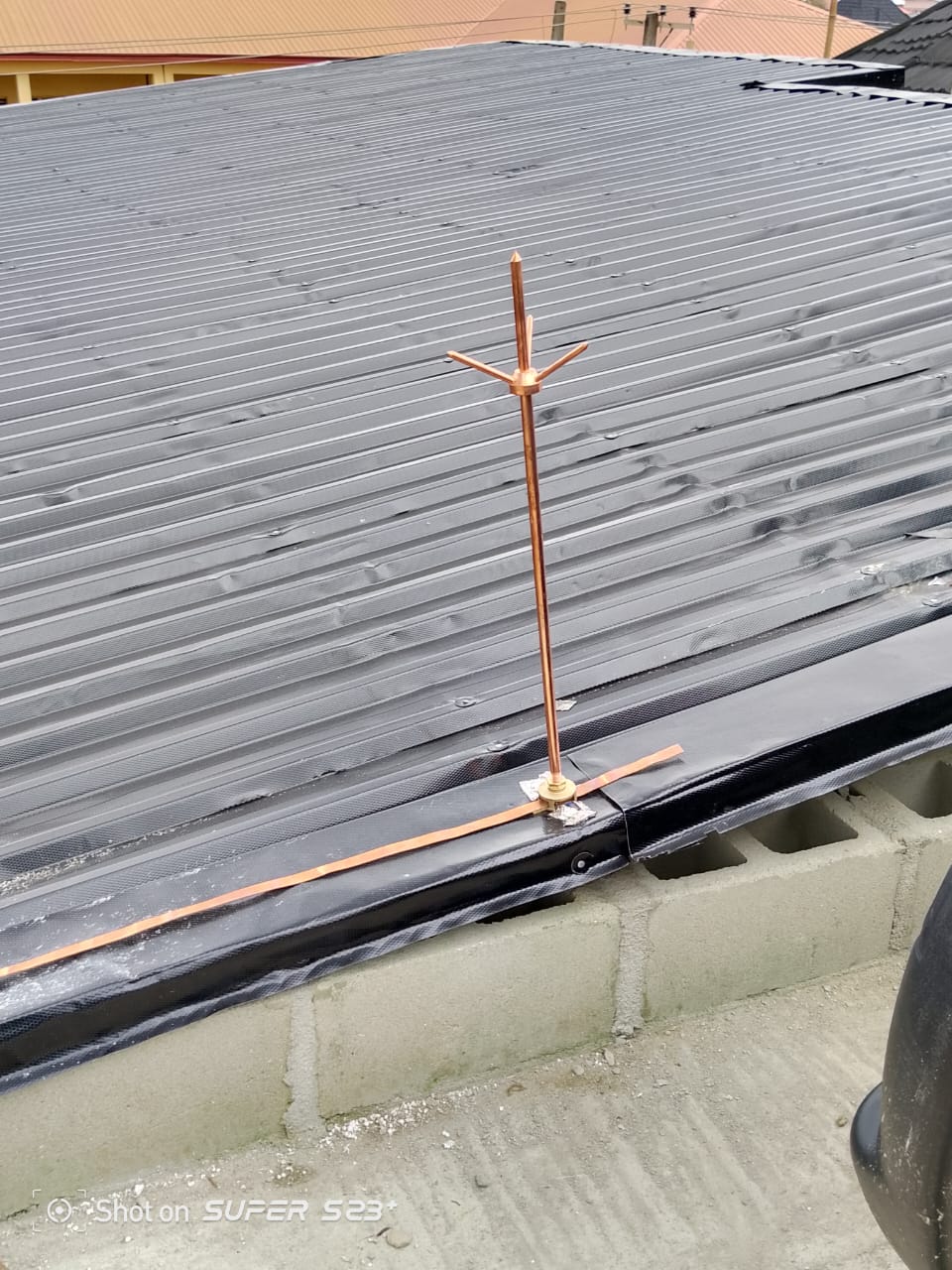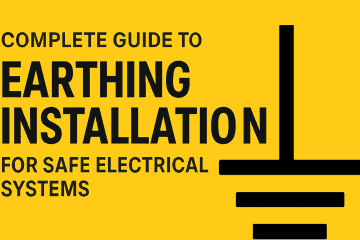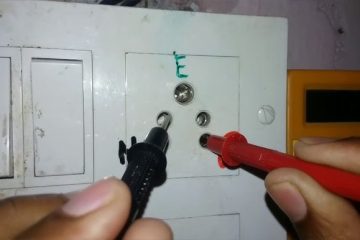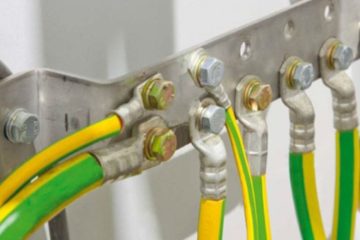At Just HardRich Global Resources Limited, we pride ourselves on being Nigeria’s choicest Electrical Power and Control Engineering Company, offering top-notch electrical services to ensure the safety and efficiency of electrical installations. One of the critical aspects of our service is electrical earthing and grounding, which plays a vital role in protecting both people and equipment from electrical hazards.
Electrical earthing, also referred to as grounding, is a fundamental safety practice in electrical systems. This process involves connecting electrical systems and equipment to the Earth, creating a path of least resistance that ensures the safe discharge of fault currents. This comprehensive blog post will delve deep into the methods, types, and installation processes of electrical earthing and grounding, while showcasing how Just HardRich Global Resources Limited can help you achieve the best results for your electrical installations in Nigeria.
What is Electrical Earthing or Grounding?
Electrical earthing (grounding in North American terms) is the process of creating a safe and reliable path for electrical currents to flow into the Earth in the event of a fault or leakage. This is done by connecting various parts of an electrical system, including metallic conductors, enclosures, and devices, to the ground through conductive materials such as copper or galvanized steel.
In Nigeria, where electrical systems are prone to voltage fluctuations and unpredictable power outages, earthing and grounding are particularly essential. Ensuring that all electrical installations are properly earthed protects against electric shock, prevents electrical fires, and guarantees that your electrical systems function as intended.
At Just HardRich Global Resources Limited, we have extensive experience in providing reliable earthing and grounding solutions that adhere to both local and international standards, ensuring the safety and longevity of your electrical installations.
Why is Electrical Earthing Important?
The importance of earthing and grounding cannot be overstated, especially in Nigeria, where erratic power supply can lead to dangerous situations. Below are some of the key reasons why electrical earthing is crucial:
- Protection from Electric Shock: When a fault occurs, such as a live wire coming into contact with a metallic surface, the electrical current may flow through the body of anyone who touches it, leading to severe electric shock. Proper earthing ensures that the fault current is directed into the Earth rather than through a human body, minimizing the risk of injury or death.
- Prevention of Electrical Fires: Electrical faults can generate heat, which may ignite surrounding materials and cause a fire. By providing a path for fault currents to safely discharge into the ground, earthing reduces the likelihood of such fires.
- Stabilization of Voltage Levels: In a balanced electrical system, all phases should operate at the same voltage level. However, faults can cause imbalances, leading to dangerous voltage spikes. Earthing helps maintain voltage stability, ensuring that your electrical systems operate within safe parameters.
- Lightning Protection: In Nigeria, thunderstorms are common, and lightning strikes can cause significant damage to buildings and electrical systems. A well-designed earthing system protects structures and equipment by directing lightning currents safely into the Earth.
- Protection of Sensitive Equipment: Modern electrical systems often include sensitive electronic devices that can be easily damaged by voltage surges. Proper grounding ensures that these surges are dissipated harmlessly, prolonging the lifespan of your equipment.
At Just HardRich Global Resources Limited, we understand the importance of earthing and grounding, and we take every measure to ensure that our clients’ electrical installations are safe, reliable, and compliant with all relevant standards.
Difference Between Earthing, Grounding, and Bonding:
While the terms “earthing” and “grounding” are often used interchangeably, they refer to the same concept but are used in different regions. However, “bonding” is a related but distinct practice.
- Earthing: Commonly used in Europe, the Commonwealth, and IEC-following countries, earthing refers to the connection of electrical systems and equipment to the Earth’s conductive surface. The primary purpose of earthing is to prevent electric shock and protect against electrical faults.
- Grounding: Used primarily in North America, grounding refers to the same process as earthing. It involves creating a connection between electrical systems and the ground to achieve safety and operational objectives.
- Bonding: Bonding is the practice of connecting two conductive elements (e.g., wires, pipes, or appliances) to ensure they are at the same electrical potential. This prevents the build-up of dangerous voltage differences between them. Bonding is particularly important in situations where multiple metallic components are present, such as in industrial settings.
In the context of Just HardRich Global Resources Limited’s services, we ensure that all electrical installations are properly earthed, grounded, and bonded in accordance with international best practices. Our expertise in these areas guarantees the safety and efficiency of your electrical systems.
Components of an Electrical Earthing System:
A complete earthing system consists of several key components, each playing a vital role in ensuring the safe discharge of electrical faults. Below are the main components of an electrical earthing system:
- Earth Continuity Conductor (Grounding Electrode Conductor): This conductor connects all metallic parts of the electrical system, including conduits, ducts, boxes, and devices, to the earthing system. It ensures that any fault current is safely directed to the Earth, preventing dangerous voltage build-up.The size of the earth continuity conductor is critical. According to international standards, the resistance of this conductor should be less than 1 ohm to ensure effective grounding. At Just HardRich Global Resources Limited, we use high-quality copper conductors to achieve low resistance and reliable performance.
- Earthing Lead (Grounding Conductor): The earthing lead connects the earth continuity conductor to the earth electrode (e.g., ground rod or plate). This connection ensures that fault currents are safely discharged into the Earth. To minimize resistance, the earthing lead should be as short and direct as possible.At Just HardRich Global Resources Limited, we carefully design and install earthing leads to minimize joints and ensure optimal performance. We also use high-quality materials, such as copper strips, to handle high fault currents.
- Earth Electrode (Earth Plate or Ground Rod): The earth electrode is the final component of the earthing system, providing the physical connection to the Earth. This electrode is typically a metallic plate, rod, or pipe buried underground. It must offer very low resistance to ensure the safe discharge of fault currents.Our expertise at Just HardRich Global Resources Limited allows us to install earth electrodes in a variety of environments, ensuring that your electrical system remains safe and reliable. We also provide additional measures, such as the use of salt and charcoal in earthing pits, to maintain moisture levels and improve conductivity.
Methods and Types of Electrical Earthing/Grounding:
There are several methods and types of electrical earthing, each suited to different applications and environments. Below are the most common methods used in electrical installations:
- Plate Earthing: This method involves burying a copper or galvanized iron plate in a horizontal position in the Earth. The plate is connected to the electrical system via an earthing lead, providing a low-resistance path for fault currents.Plate earthing is commonly used in residential and commercial buildings, and at Just HardRich Global Resources Limited, we ensure that all plates are properly sized and installed to meet the specific needs of your electrical system.
- Rod Earthing: In rod earthing, a copper or galvanized iron rod is driven into the ground. The rod serves as the earth electrode, providing a direct connection to the Earth. This method is often used in areas with rocky or sandy soil, where plate earthing may not be practical.At Just HardRich Global Resources Limited, we use high-quality rods and specialized equipment to install rod earthing systems that meet international standards.
- Pipe Earthing: Pipe earthing involves burying a galvanized iron pipe in the ground. The pipe serves as the earth electrode, providing a low-resistance path for fault currents. This method is commonly used in industrial settings, where large fault currents may be present.Our team at Just HardRich Global Resources Limited has extensive experience in installing pipe earthing systems, ensuring that your industrial facility remains safe and compliant with all relevant regulations.
- Strip or Wire Earthing: In strip or wire earthing, a copper or galvanized iron strip is buried in a trench. The strip serves as the earth electrode, providing a low-resistance path for fault currents. This method is often used in situations where large areas need to be earthed, such as in substations or power plants.At Just HardRich Global Resources Limited, we design and install strip earthing systems that provide reliable grounding for large installations.
- Earthing Through Water Pipes: In some cases, water pipes can be used as part of the earthing system. However, this method is generally discouraged due to the potential for corrosion and the risk of electrical faults affecting the water supply.If you are considering this method, we recommend consulting with Just HardRich Global Resources Limited to explore safer and more reliable alternatives.
Installation Process for Electrical Earthing/Grounding:
The installation of an earthing system requires careful planning and execution to ensure that all components work together to provide a safe and effective grounding solution. Below is a step-by-step guide to the installation process:
- Site Assessment: Before installing an earthing system, it is essential to assess the site to determine the most suitable earthing method. Factors such as soil type, moisture content, and the presence of underground utilities must be considered.At Just HardRich Global Resources Limited, we conduct thorough site assessments to identify the best earthing solution for your specific needs.
- Selection of Materials: The choice of materials for the earthing system is critical to its performance. Copper and galvanized iron are commonly used due to their excellent conductivity and resistance to corrosion.Our team at Just HardRich Global Resources Limited selects only the highest-quality materials to ensure that your earthing system performs reliably for years to come.
- Excavation and Trenching: Once the site has been assessed and materials selected, the next step is to excavate the area where the earthing components will be installed. This may involve digging a trench for a strip earthing system or excavating a pit for a plate earthing system.We take great care to ensure that all excavation work is carried out safely and with minimal disruption to your property.
- Installation of Earth Electrode: The earth electrode is the most critical component of the earthing system. Whether you are using a plate, rod, or pipe, it must be installed in such a way that it maintains good contact with the surrounding soil.At Just HardRich Global Resources Limited, we use advanced techniques and equipment to install earth electrodes that provide optimal performance in all soil conditions.
- Connection of Earthing Lead and Continuity Conductor: After the earth electrode has been installed, the earthing lead and continuity conductor must be connected. This connection should be secure and corrosion-resistant to ensure long-term reliability.Our skilled technicians at Just HardRich Global Resources Limited ensure that all connections are made to the highest standards, using proper fittings and protective coatings.
- Testing and Commissioning: Once the earthing system has been installed, it must be tested to verify that it meets all relevant safety standards. This involves measuring the resistance of the system and checking for continuity.At Just HardRich Global Resources Limited, we use state-of-the-art testing equipment to ensure that your earthing system is fully operational and compliant with all regulations.
- Maintenance and Inspection: Regular maintenance and inspection are essential to ensure that your earthing system continues to perform reliably over time. This may involve checking for corrosion, verifying continuity, and testing resistance levels.Our team at Just HardRich Global Resources Limited offers ongoing maintenance services to keep your earthing system in top condition.
Why Choose Just HardRich Global Resources Limited?
At Just HardRich Global Resources Limited, we are committed to providing our clients with the highest quality electrical services, including expert earthing and grounding solutions. Here are just a few reasons why you should choose us for your next project:
- Experienced and Qualified Technicians: Our team of technicians has extensive experience in all aspects of electrical earthing and grounding. We are fully trained and certified to install and maintain earthing systems that meet both local and international standards.
- Comprehensive Services: From site assessment and design to installation and testing, we offer a full range of services to ensure that your earthing system is safe, reliable, and compliant with all regulations.
- Commitment to Quality: At Just HardRich Global Resources Limited, we use only the highest-quality materials and equipment in all of our installations. We are committed to delivering solutions that stand the test of time.
- Customer-Focused Approach: We understand that every project is unique, and we work closely with our clients to deliver customized solutions that meet their specific needs. Our customer-focused approach ensures that you receive the best possible service, every time.
- Competitive Pricing: We offer competitive pricing on all of our services, without compromising on quality. Our goal is to provide you with the best value for your investment.
Conclusion:
Electrical earthing and grounding are essential components of any electrical installation, providing protection against electric shock, electrical fires, voltage fluctuations, and lightning strikes. At Just HardRich Global Resources Limited, we have the expertise and experience to deliver reliable and effective earthing solutions for residential, commercial, and industrial projects across Nigeria.
Whether you need a simple earthing system for your home or a complex grounding solution for your industrial facility, we have the knowledge and skills to get the job done right. Contact us today to learn more about our services and how we can help you achieve the highest levels of safety and performance for your electrical installations.




